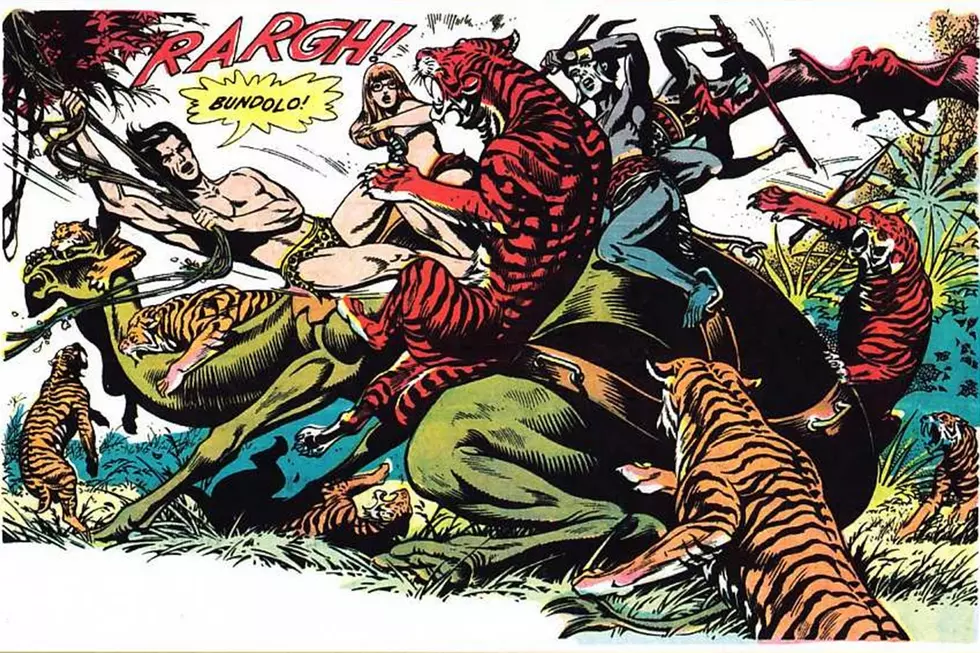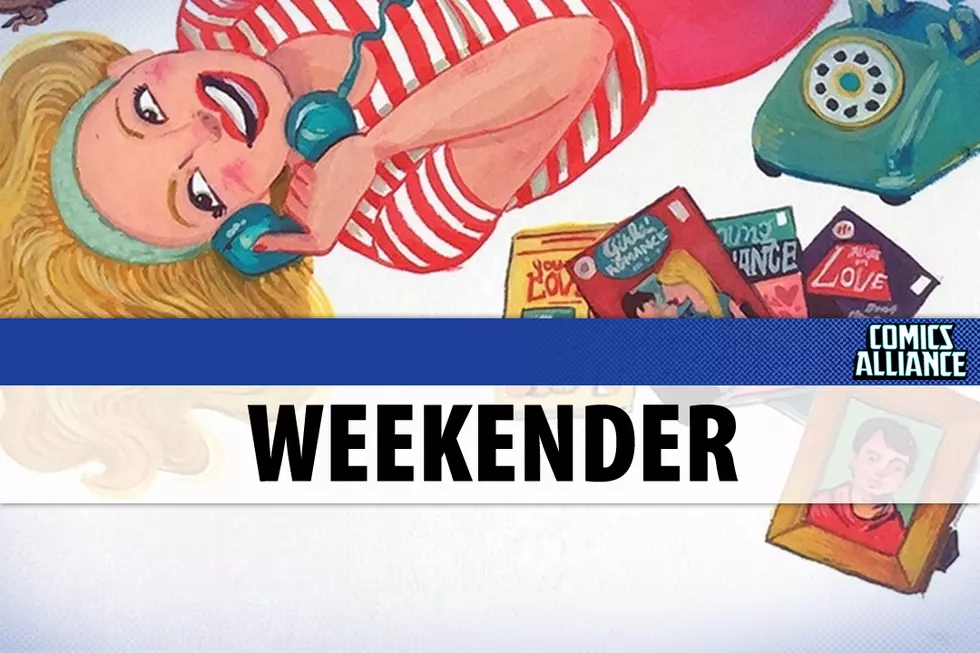
Father Of The Adventure Strip: A Tribute To Hal Foster
At a time when the syndicated newspaper strip was one of the biggest sources of entertainment in the world, Harold "Hal" Foster was its reluctant, undisputed king. Born in Halifax, Nova Scotia, Canada on August 16th, 1892, Foster's work on Tarzan and Prince Valiant narrowed the gap between fine art and cartooning, and paved the way for generations of artists to follow.
Long before he entered the comic strips, Hal Foster prepared for them by living a life of adventure, aristocracy, and hardship. Foster came from a shipping family with wealth, but was never able to experience it: by the time he was born, the money was spent, and they barely maintained what he called a "shabby gentility." As a youth, Foster captained a sloop through the Atlantic, and learned to hunt and fish in the wilds surrounding Halifax from his stepfather, cultivating a love for nature that is readily apparent in his art.
After the family business failed, the family relocated westward to Winnipeg, and Foster left school at an early age. His career as a professional artist began when he was about eighteen, producing catalog art for the Hudson Bay Company, but before and after that he made his living in the Canadian wilderness as a fur trapper, hunting guide, and gold prospector. He even worked a claim with his wife, Helen, that was stolen by claim-jumpers.
After sending his wife and two sons to live with her relatives in Topeka, Kansas, Foster took a thousand-mile bicycle trip to Chicago to begin his art career in earnest. He studied at the Chicago Art Institute and other schools and eventually landed a job at an advertising firm that allowed him to move his family to the city, but when the Great Depression hit, work slowed to a crawl. He needed something stable, and despite his reservations about entering the field of comic strips, when he was given the chance to adapt Edgar Rice Burroughs's Tarzan of the Apes, he took it.
Debuting in 1929, the Tarzan of the Apes daily heralded a new age for comic strips. A fine artist to his bones, Foster introduced dynamic action, perfect anatomy and fluid body movement to the comics page.
Through his hands, the titular character was imbued with a balance of nobility and visceral barbarity, and Foster's dramatically-lit chiaroscuro panels, accurate nature drawing, and raucous action ensured that Tarzan of the Apes was a hit. Soon it appeared in newspapers across the country, running six days a week for ten weeks.
But Foster did not intend to stay in comics, and when finished with the adaptation of Burroughs's imperialist adventure, he returned to illustration. The Tarzan Sunday strip began in 1931 with Rex Maxon as cartoonist, but at the insistence of Burroughs himself, Foster was lured back.
On the daily strip, Foster's work was gripping, powerful and influential. On the full-page, full-color Sunday stories, it was absolutely explosive.
Foster remained on Tarzan for about six years, producing hundreds of pages, and continuing to adapt his illustrative approach to cartooning, but he grew tired of the material. If he was going to continue working in a medium he didn't care for, at minimum he wanted creative control over his output, so he began working on a story set in Arthurian England that he intended to span decades.
After months of research and planning, Foster pitched his new story to United Features Syndicate, distributor of Tarzan, and they turned him down. He made the same pitch to William Randolph Hearst and was offered an unprecedented portion of ownership. (Nobody seems to be able to agree on exactly how much: some sources say 50/50, others say Foster retained 100%.)
Prince Valiant in the Days of King Arthur, which everybody simply called Prince Valiant, debuted in 1937 and quickly became the gold standard of the Sunday cartoons. The story begins with Val as the five-year-old son of a deposed king and follows him to manhood, through battles with ancient monsters and (sometimes anachronistic) beasts, knighthood with King Arthur in Camelot, fatherhood, and adventures all across myth, history, and the globe.
Prince Valiant is somehow wholesome overall, despite lurid and violent moments. It shifts from scenes of a rosy-cheeked Val beaming with the optimism of youth to panoramic battle scenes in which the brave knight mows down his enemies with ferocity.
It is epic, swashbuckling, painterly, ornate, endlessly clever, and brilliantly plotted, and without the intrusion of word balloons to muck up the panels, every frame of Prince Valiant is like a story unto itself: beautifully designed, and rendered with a precision that seems to flirt with the divine.
Incredibly detailed, intricate, and classicist, Prince Valiant looked worlds apart from everything else on the page, and in the golden age of the newspaper strip it was considered by many to be the pinnacle of achievement in the medium. Even in the poor printing conditions of the day, Prince Valiant dazzled readers with its vivid colors and meticulous composition, and it was carried in newspapers all over North America, with collected translations eventually making their way across the world.
For over thirty years, Foster wrote and illustrated the continuous narrative of Prince Valiant on his own. He only brought in assistants near the end of his run, and even when he finally found his replacement in the 1970s, he continued to layout and script the series for years. After surviving the Great Depression and WWII, Prince Valiant continues to be published in newspapers today.
Foster passed away in 1982, leaving behind a retinue of legends who were influenced by his guiding light, and hundreds and hundreds of pages of the most beautiful comic art you will ever see.
More From ComicsAlliance

![The Best Dark Horse Comics Covers of 2016 [Gallery]](http://townsquare.media/site/622/files/2017/01/featured.png?w=980&q=75)







